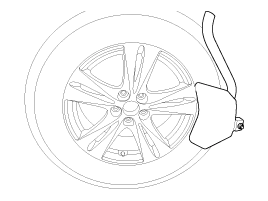Hyundai Genesis (DH): Tire Pressure Monitoring System / TPMS Sensor Repair procedures
Hyundai Genesis (DH) 2013-2016 Service Manual / Suspension System / Tire Pressure Monitoring System / TPMS Sensor Repair procedures
| Removal |
| 1. |
Remove the valve core and deflate the tire. |
| 2. |
Remove the side of the tire bead area from the wheel using tire changing machine .
|


